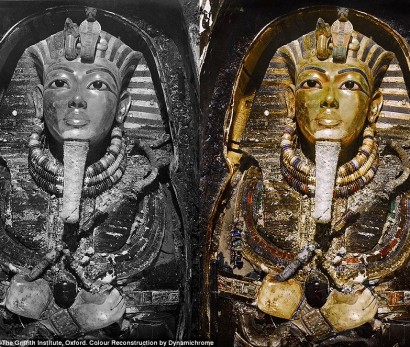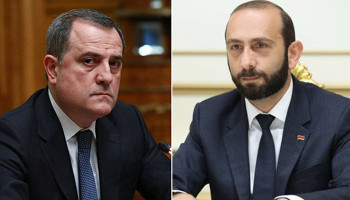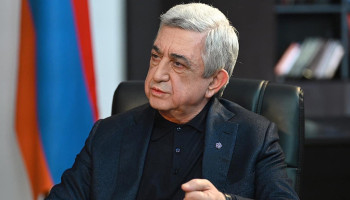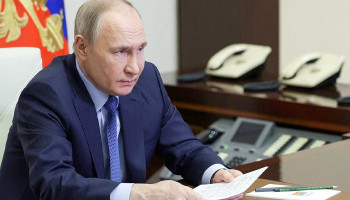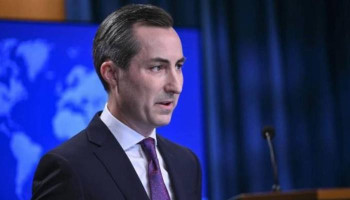In 1922, the discovery of Tutankhamun's 3,000-year-old burial chamber captivated the world.
It was the culmination of a 15-year search which eventually uncovered 5,000 antiques - including the king's sarcophagus, his gold mask, and stillborn mummies.
This week, on the 93rd anniversary of the find, researchers have unveiled newly colourised photos of the discovery.
The pictures were taken by British photographer Harry Burton during the excavation process and have been made from the original glass plate negatives.
They tell the story of English archaeologist and Egyptologist Howard Carter, who was asked in 1907 to supervise excavations in the Valley of the Kings.
By that point, Carter had been in in Egypt since 1891 and most of the ancient Egyptian tombs had been discovered.
But very little was known about King Tutankhamen, who had died when he was 19..
On 4 November 1922, Carter's group found steps that led to Tutankhamun's tomb and spent several months cataloguing the antechamber.
The discovery was made near the entrance of the nearby tomb of King Ramses VI in the Valley of the Kings.
On 26 November, 1922, Carter and fellow archaeologist Lord Carnarvon entered the interior chambers of the tomb, finding them miraculously intact.
From then a famous exchange between Lord Carnarvon and Carter took place.
'Can you see anything?' asked George Herbert, the fifth Earl of Carnarvon, standing in a gloomy passageway cut into the bedrock of the Valley of the Kings, on the west bank of the Nile.
'Yes,' replied Carter, who was peering at the antechamber to the royal tomb. 'Wonderful things.'
'At first I could see nothing, the hot air escaping from the chamber causing the candle flame to flicker,' Carter later recalled.
'But presently, as my eyes grew accustomed to the light, details of the room within emerged slowly from the mist, strange animals, statues, and gold—everywhere the glint of gold.'
To document the entire process, the Metropolitan Museum sent Burton as the excavation photographer.
He was 'Carter's eye and memory.' With his enormous camera and cumbersome negative plates, Burton trekked between the discovery site, his laboratory and his improvised darkroom.
'Every step of the excavation work was documented in photographs, right down to the smallest detail,' according to Premier Exhibition, who are displaying the photos.
'The results of Burton's labours are 2,800 large-format glass negatives, which document all of the finds, their location in the tomb and every single step of the excavators' work with the utmost precision.
'Carter patiently and unconditionally encouraged him like no other member of his team and, thanks to his photos, Burton was the first and only archaeological photographer to achieve worldwide fame.'
The colourised black and white photographs are part of a new exhibition opening in New York called The Discovery of King Tut.
But the discoveries to make made in King Tut's burial chamber are far from complete.
A ground-breaking investigation of King Tut's tomb to find secret chambers will begin today and will last until Friday, Egypt's Minister of Antiquity said this week.
Researchers believe Tutankhamun's tomb may contain two hidden chambers.
Egypt's antiquities minister, Mamdouh Eldamaty, claimss cratching and markings on the northern and western walls are strikingly similar to those found by Howard Carter on the entrance of King Tut's tomb.
